Combat aircraft. Air Volkssturm weapons and its collapse
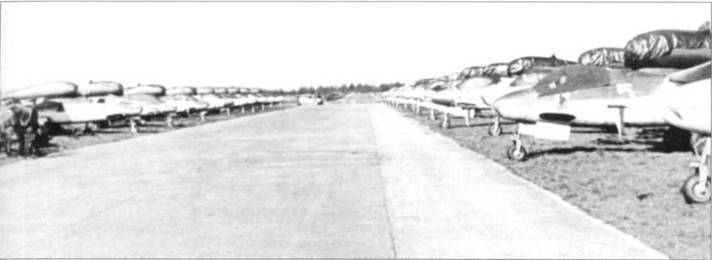
May 8, 1945. British troops occupy Lecc airfield. In this last month of the war, a difficult unit was based at this airfield - JG.1, which was armed with He-162A-1 / A-2 jet aircraft.
Thirty-one aircraft met the British. It is clear that the crews who received the order to cease hostilities did not join the partisans, and they could not fight anyway due to the complete lack of fuel for their “birds”.
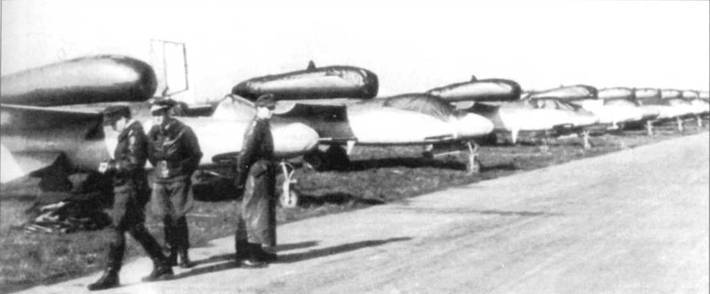
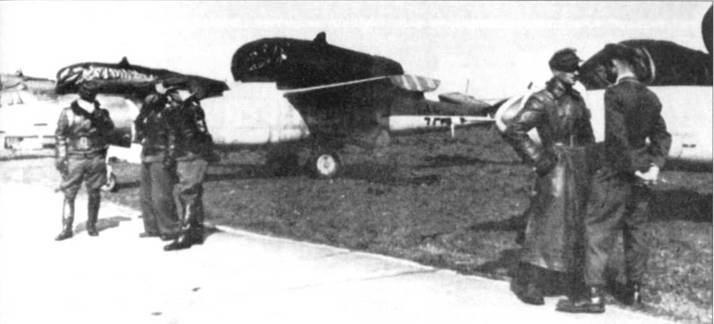
A month earlier, the Americans in Eger captured an entire underground plant with several dozen He.162 in varying degrees of readiness.
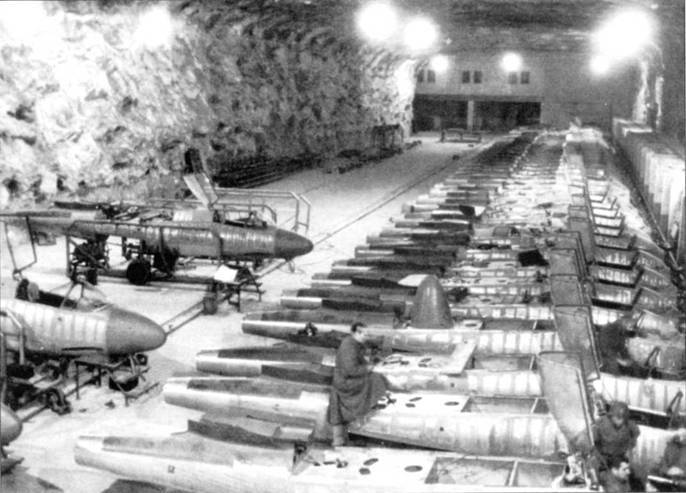
It is clear that all the captured items were “honestly” divided between the allies, and two He.162 fell into the Soviet Union. Plus, our "got hold" in Rostock quite a lot of technical documentation for the aircraft.
Why such an interest? Everything is simple. The Salamander was wooden! And in the Soviet Union of that time, the simpler the materials and the cheaper the equipment, the more likely it was to be in the series.
Aircraft - in particular.
Therefore, on the 162nd, our specialists from the GLITS of the Air Force of the Red Army twisted in all projections and ... were disappointed! The Salamander did not meet the criteria that the Soviet military had regarding what a jet should be.
From the captured and carefully studied reports, it became clear that the He-162 is still a fruit, therefore the attitude towards it was appropriate: “I want it and I’ll prick it”. Therefore, the first flight as experimental No.162 was completed only on May 8, 1946, under the control of test pilot Georgy Shiyanov.
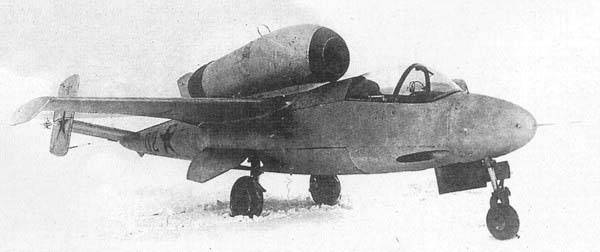
A number of flights were conducted, as a result of which the idea of releasing a copy of He.162 at Soviet plants was solemnly buried. Despite the fact that flights were very much limited in speed and load on the structure, it turned out that He.162 does not have satisfactory aerobatic qualities. The aircraft is unstable in terms of track, has a small margin of longitudinal stability and lateral stability close to neutral.
From an aerodynamic point of view, everything was not very good either. High separation speed (230 km / h against the passport 190 km / h), long take-off run (1350 meters), low rate of climb, quick loss of speed with a decrease in engine speed. On the whole, He.162 flew, but he did it clearly reluctantly.
Positive points were also noted, but they were mostly in engineering solutions. Powder catapult, for example. Or a fuel tank, which the Germans made inside the wooden wing, covering the inner surface of the wing with a special compound. Or a system for cleaning the landing gear and flaps using springs, which was very cheap in design and witty by decision. The release was made hydraulically.
But in general, having fulfilled He.162, it was decided to close the topic. Lavochkin, Mikoyan and Yakovlev had more confidence, and their jet planes were already starting to fly.
It is clear that the most interesting part in the design was probably used in domestic developments.
In general, a natural result for this aircraft. The allies were about the same. Familiarized and shoved through museums and collections.
In principle, as he was born and lived and served, he left the stage.
And He. 162 was born not only notably, but partly naturally. Only in Germany of the 1944 model, where everything was already cracking at the seams, could such a project as the Volksjäger / People's Fighter be born. That is, the plane is simple, cheap, suitable for mass production from cheap materials and with the use of low-skilled labor.
On September 8, 1944, the Technical Department prepared the basic requirements for such an aircraft and sent them to all German aircraft manufacturers.
According to the requirements, the aircraft had to have one BMW-003 turbojet engine, weigh no more than 2000 kg, carry weapons from one or two 30-mm guns, develop a speed of 745 km / h, and have a flight duration of 30 minutes. The aircraft should have been prepared for serial production by January 1, 1945, and outline designs should have been provided by September 20, 1944.
It immediately became clear to all German aircraft engineers that the plane should be made of manure and sticks, as cheaply and simply as possible. A sort of ersatz for kamikaze in a European way.
Messerschmitt, who was still fighting for his Me.262, refused to submit anything at all to the competition; Focke-Wulf and Arado presented something completely unrealistic. The remaining ... In general, the "project 211" of the Blom and Foss company was initially recognized as the best, which really looked very much like those planes that went into series after the war.
Heinkel did not agree, and through open fusion and closed undercover intrigues, they outplayed the competition in their favor. And in the end, it was decided to begin production of the Heinkel aircraft with the monthly production of 1000 aircraft.
Initially, the fighter was called He.500, but in order to deceive the intelligence of opponents, the Technical Department assigned the aircraft the designation He.162. This number was originally carried by the Messerschmitt project of a high-speed bomber, which did not go into mass production. At the same time, the plane received the nickname "Salamander", which was originally the designation of the entire program.
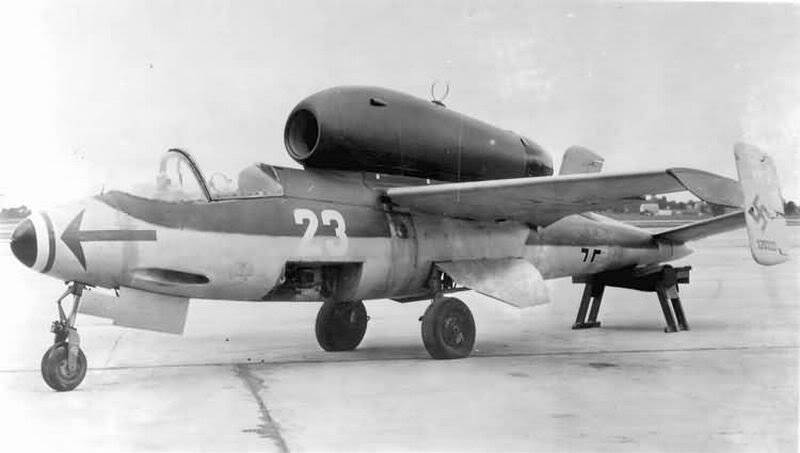
Three assembly lines at Heinkel and Junkers were planned for the production of the “national fighter,” with a general plan for the production of 2000 aircraft per month. For the production of wooden parts, two plants were specially urgently created in Erfurt and Stuttgart, and four Heinkel plants and five Junkers plants throughout Germany were to produce fuselages and other metal-intensive components.
It was planned to finish the first thousand He. 162 in April 1945, and in May to release 2000 aircraft.
The He.162 fuselage was a monocoque of light alloy with a wooden bow cone. The integral wing was mainly made of wood with plywood sheathing and metal tips. The plumage and rudders were of light alloy, with the exception of the wooden keel.
The engine was mounted directly on the fuselage, behind the cockpit. Bolted. It was fastened in front with two vertical bolts, and behind - horizontal. The normal fuel supply consisted of 700 liters in one soft fuselage tank and in one additional tank in the wing of 180 liters. The fuel supply was enough for 20-30 minutes of engine operation, depending on the operating mode. Served as fuel aviation kerosene J2.
Everything was very simple in the cockpit too.
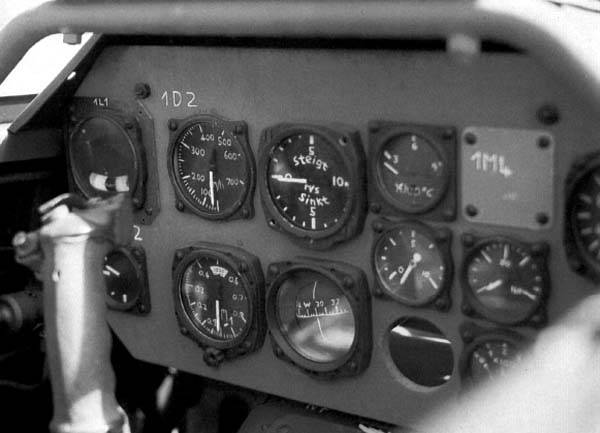
The chair is the simplest, but with a pyrotechnic charge. The radio equipment set was also the simplest and consisted of the FuG-25a transponder, the simplest ZVG 16 radio train and the FuG 24 radio station. The radio station was designed only for 5-10 hours of operation and was made specifically for He.162, since this aircraft did not threaten a longer life. The transmitter and receiver had separate antennas on the left and right keel, respectively. The direction finder of the radio compass was mounted above the engine. In the left keel was also a FuG-25a antenna.
The armament consisted of two cannons placed on the sides of the fuselage. In the modification of He.162A-1, it was a 30-mm MK.108 gun with 50 rounds of ammunition per barrel, but such ammunition was just ridiculous, because in the end they returned to the original weapons scheme (rejected at one time by the Technical Department) of two 20- mm MG.151 / 20E cannons with 120 rounds of ammunition per barrel. Sleeves and links were thrown through holes in the lower part of the fuselage. The reloading and descent of the MK.108 guns is electropneumatic, of the MG.151 / 20 - electric.
In mandatory modifications (as the Germans had without!), It was planned to install other weapons options, including 55-mm R4M unguided missiles and an 80-mm Panzerblitz.
The first official flight, still experimental He.162-V1 made on December 6, 1944 under the control of the flight-captain Peter. In general, by that time the aircraft was already in production, and its series really began.
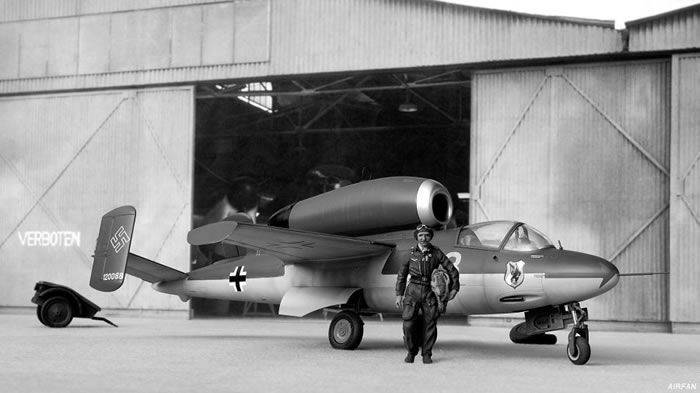
During the first 20-minute flight, the He.162-V1 reached a speed of 835 km / h at an altitude of 6000 m, but the flight had to be stopped, because the landing gear wing flap had a defective hinge in the air.
We decided to continue, not paying attention to defects. However, exactly 4 days later the same Peter showed the plane to the representatives of the party and the Luftwaffe, and during the high-speed passage the wing was destroyed. As a result, the plane crashed, exploded, the pilot did not have time to eject and died.
And nothing! The next aircraft, He.162-V2, in the first flight led the director of Heinkel Franke himself! Franke showed on the plane the ultimate flight data, which, in general, saved the entire project.
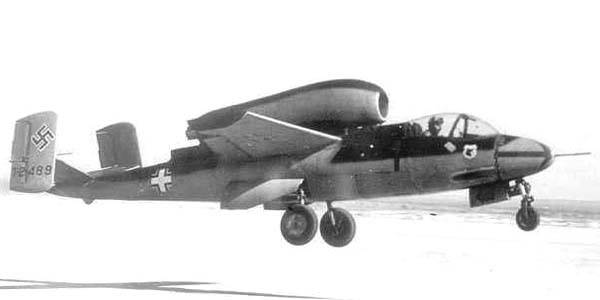
And the Salamander went into the series. In general, the He.162a-2 modification, on which the replacement of weapons has already occurred, was mass-produced. MK-108 did not take root, since vibration from recoil seriously threatened some structural elements. Therefore, the aircraft was rearmament on MG-151/20, and the name was changed to He.162a-2.
This was beneficial in that two MG-151s with 120 rounds of ammunition per barrel weighed only 121 kg, and two MK-108s with 50 shells each - 215 kg. The MK-108 guns were planned to be mounted on the He.162a-3, for which its fuselage should have been strengthened, but this option was not really available.
As variations were not produced in which it was planned to install engines of other manufacturers, since BMW really did not have time to produce their BMW-003E engines, installation options for Junkers Jumo-004D, Heinkel-Hirt 011A, and Argus-Ror were considered.
In general, to plan to produce one of the modifications of He.162 with two engines from Argus in 1946 was somewhat ... naive.
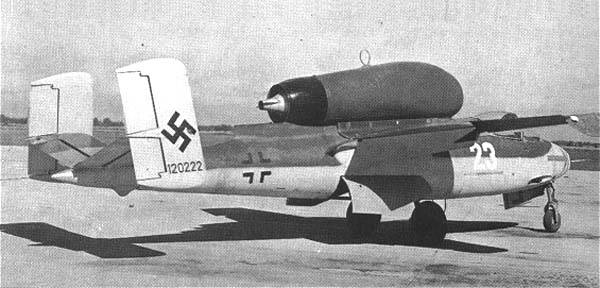
Nevertheless, in December 1944, the Ne.162 flew, which means that it is time to think about the pilots who will sit at the helm of the "People’s Fighters".
There is a very interesting nuance.
During December 1944 - February 1945, tests were conducted in Rechlin and Munich-Reim, which showed that the He.162 is not the easiest aircraft to fly. Unfortunately.
In general, it was originally planned that pilots from the so-called “Goering's call”, that is, in fact graduates of flying clubs, if in our opinion, would be put on the “Salamander”. However, "suddenly" it turned out that the Ne.162 is difficult to pilot not only for inexperienced pilots, but even experienced pilots had problems controlling this fighter.
So the dreams of "air Volkssturm" crumbled to dust and remained only dreams. And I had to retrain and put in the cabin "Salamander" completely completed pilots, with whom in Germany the sample in April 1945 had real problems.
Plus, delays in the supply of aircraft began. Despite the fact that the production of aircraft was puzzled by a large number of factories, nevertheless, the bombing of German cities by the Allies yielded certain results, and the German aviation industry gradually turned into broken brick and rubble.
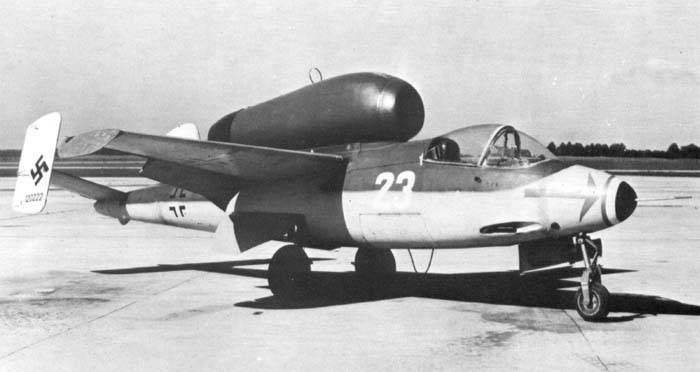
Therefore, by April 11, 1945, in two groups and the headquarters squadron JG1 instead of 120 assigned to the state of He-162, only I / JG1 had 16 machines (of which 10 were combat-ready), and the pilots recruited no more than seventy people.
So, despite all the efforts, the JG1 group did not become combat ready. Moreover, without even entering the war, from mid-March 1945 until the end of the war, JG1 lost nine pilots in accidents and disasters, and another five were injured.
However, isolated cases are known when He.162 entered into battle with Allied aircraft.
The first such incident was noted on April 15, when during a flight from Ludwiglust to Lecc, Lieutenant Rudolf Schmitt, acting as commander of I / JG1, met with several English Spitfires. There were no losses, because Schmitt, using the advantage in speed, simply washed away.
On April 19, several He-162A-2s rose from the Lecc airfield to intercept Allied fighter-bomber aircraft that could be sent to the airfield.
In this battle the first officially recorded victory was won (P-47 Thunderbolt, the pilot jumped with a parachute and was captured) by Gunther Kirchner. True, Kirchner was shot down almost immediately by another P-47 and died, becoming the first and only JG1 pilot who died in a battle on He.162. Catapults really helped out.
And the participant of the first battle Schmitt on May 4, 1945 shot down the British Tempest. This was the last recorded victory of He. 162. On May 8, the war for JG1 was over.
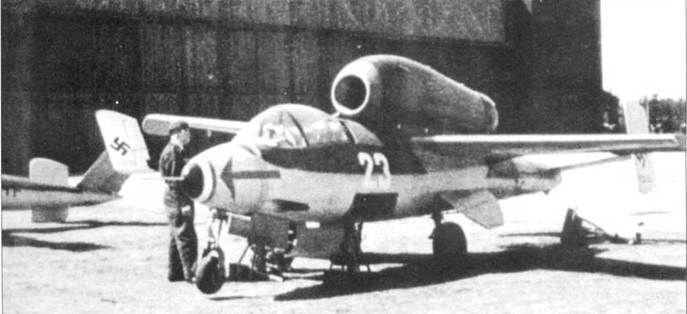
From captured documents, it became known that Heinkel continued to develop jet fighters during 1944-45, using the successful experience of creating the He-178 in 1939 and the He-280 in 1941.
During this time, Heinkel worked in detail on 20 projects of single-seat fighters with various engines and layout. But only He.162 went into business, because the own HeS-11 engine was never brought to mind, so I had to play from other people's developments (BMW and Junkers), and the time I went into the series He.162 made me do the car is the simplest and cheapest.
Surprisingly, Heinkel managed to simultaneously produce the masterpiece He.219 and the frank self-propelled (albeit reactive) He.162.
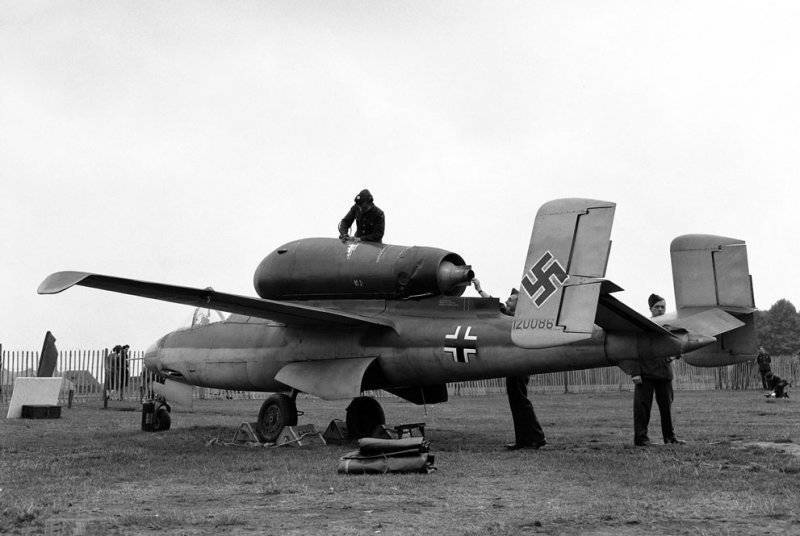
Evaluating the project as a whole, we can confidently say that He.162, despite the cheapness and advancement in some engineering issues, was still a hasty home-made. With all the ensuing consequences.
The aircraft was developed not just in the shortest - as soon as possible on the basis of previously made developments (the Sparrow project at Heinkel) as cheap as possible, in the expectation that it will become weapons "Air volkssturm", but the glory of the creators, was so difficult to manage that it did not.
It is clear that even a thousand Salamander would hardly have drastically changed the situation on the German air front, since the Mustangs, Thunderbolts, Spitfires, Yakovlevs and Lavochkins had already firmly gained air supremacy. And they would not give it back.
And the plane itself, let’s say, despite the novelties and the turbojet engine, was nothing like that. Therefore, he was deservedly set aside from the side of the Allies and ours.
Deservedly. Haste has never generated anything decent, and even more so in aviation.
LTX He.162a-2
Wingspan, m: 7,02
Length, m: 9,03
Height, m: 2,60
Wing area, м2: 11,1
Weight, kg
- empty aircraft: 1 664
- normal takeoff: 2 600
- Maximum takeoff: 2800
Engine: 1 x BMW-003E-1, turbojet
Thrust, kgf
- rated: 800
- afterburner: 920
Maximum speed km / h
- by the ground: 885
- at height: 900
Practical range, km: 970
Maximum rate of climb, m / min: 1 404
Practical ceiling, m: 12 000
Crew: 1
Armament: two 20-mm MG-151/20 guns with 120 rounds per barrel.
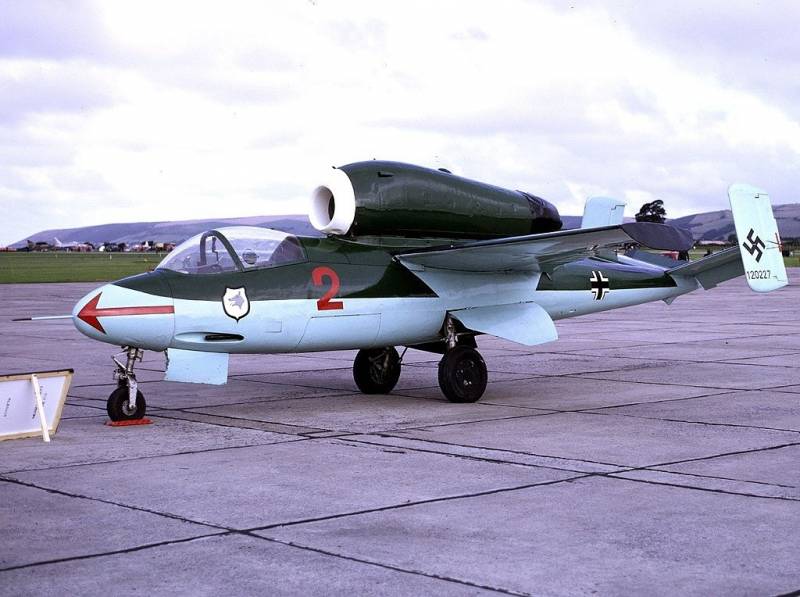
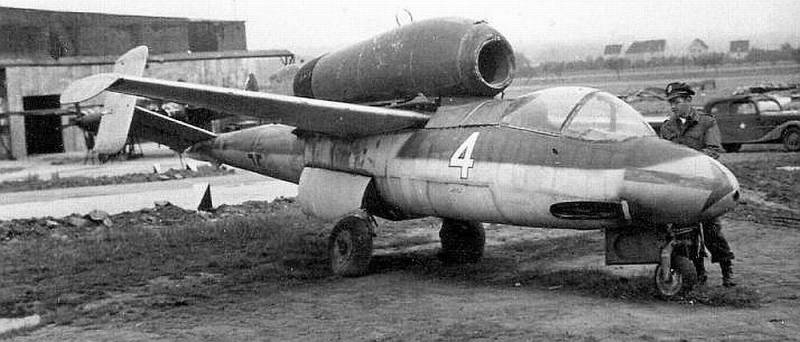
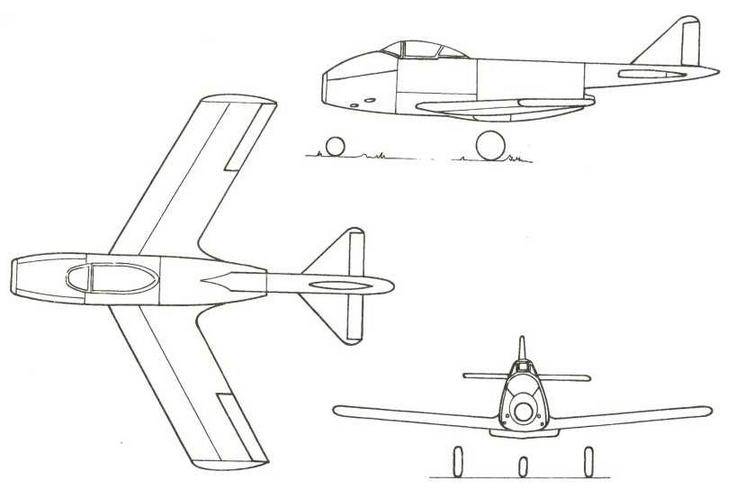
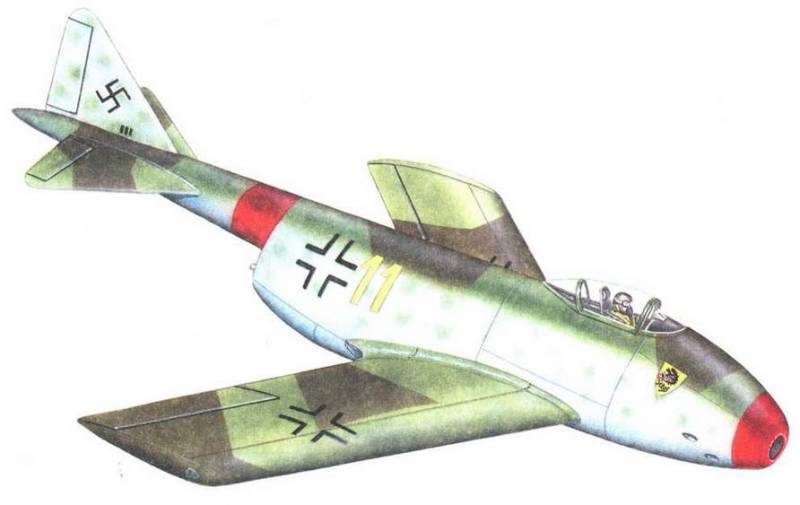
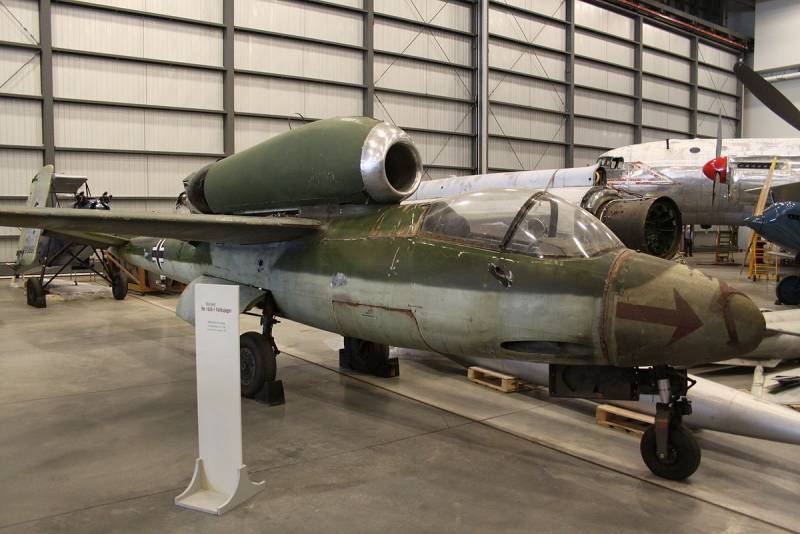
Information